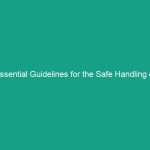Good Morning Team!
Today, we’re going to talk about an essential piece of equipment that plays a crucial role in our daily operations: the skid steer. Our focus is on the Essential Skid Steer Guidelines: Avoid These Critical Safety Risks!. Understanding these guidelines is vital for maintaining a safe work Environment and protecting ourselves and our coworkers.
Skid steers are powerful machines, but they come with inherent risks. By the end of this Toolbox Talk, you will be equipped with the knowledge to operate skid steers safely and effectively. Let’s dive in!
Understanding Essential Skid Steer Guidelines
So, what exactly are the essential skid steer guidelines? These are the Safety protocols and operational Best Practices that ensure the safe use of skid steers in our work environment. These guidelines are crucial because they help minimize accidents and injuries, ensuring that everyone can go home safely at the end of the day.
Skid steers are versatile machines used for various tasks, from landscaping to construction. However, common misconceptions exist; for instance, some may think that because skid steers are compact, they are safer or easier to operate than larger machinery. This is not the case. The compact size can lead to dangerous situations if not handled properly, thus emphasizing the need for strict adherence to Safety Guidelines.
Key Hazards, Risks, and Safety Considerations
When operating skid steers, it’s essential to recognize specific Hazards and risks associated with their use:
- Tip-Over Risks: Skid steers can easily tip over if operated on uneven ground or if overloaded. This can lead to severe injuries.
- Operator Blind Spots: Limited visibility can increase the risk of accidents, especially around pedestrians and other equipment.
- Maintenance Issues: Lack of proper Maintenance can lead to mechanical failures while operating, posing significant risks.
- Improper Load Handling: Overloading or improperly securing loads can cause the skid steer to become unstable.
Ignoring these risks can lead to serious accidents, injuries, and even fatalities. It’s critical that we recognize and address these hazards to ensure everyone’s safety.
Best Practices, Procedures, & Actionable Advice
Now that we’ve identified the risks, let’s discuss Best Practices and Procedures that can help mitigate them:
1. Pre-Operational Checks
Before operating a skid steer, always conduct a thorough pre-operational check. This includes:
- Checking fluid levels (oil, fuel, hydraulic).
- Inspecting tires for wear and proper inflation.
- Ensuring all safety features are functioning, such as seat belts and lights.
2. Proper Training
Ensure that all operators are properly trained and certified to operate a skid steer. Training should cover:
- Understanding controls and safety features.
- Recognizing job site hazards.
- Proper load handling techniques.
3. Safe Operating Procedures
When operating a skid steer:
- Always wear a seatbelt.
- Keep the load low to the ground for better stability.
- Use caution when turning and avoid sudden movements.
- Be aware of your surroundings, especially the location of other workers and equipment.
4. Regular Maintenance
Regular maintenance is key to ensuring safety:
- Follow the manufacturer’s maintenance schedule.
- Keep the machine clean and free of debris.
Real-world incidents emphasize the importance of these practices. For instance, a company experienced a severe accident due to a lack of pre-operational checks, resulting in costly downtime and injuries. Regular maintenance could have prevented this incident.
Regulations, Standards, and Compliance
Compliance with safety Regulations is not just about following rules; it’s about protecting lives. Relevant Standards include:
- OSHA regulations for equipment Operation in the workplace.
- ISO standards for safety management systems.
- Company-specific safety protocols.
Being compliant with these regulations is critical for minimizing risks and ensuring a safe work environment. It also protects the company from potential legal issues and financial liabilities.
Employee Engagement & Discussion
Now, let’s open the floor for discussion. What safety challenges have you encountered related to skid steer operations? How can we improve our safety practices? Your experiences and insights are invaluable in enhancing our safety culture.
Conclusion & Key Takeaways
To wrap up, here are the key takeaways from our Toolbox Talk:
- Always conduct pre-operational checks before using a skid steer.
- Ensure proper training and understanding of safe operating procedures.
- Regular maintenance is essential to prevent mechanical failures.
- Stay compliant with safety regulations to protect yourself and your coworkers.
Let’s prioritize safety and apply these essential skid steer guidelines in our daily operations. Thank you for your attention and commitment to safety. Together, we can create a safer workplace for everyone!


